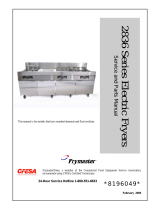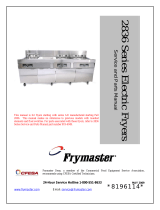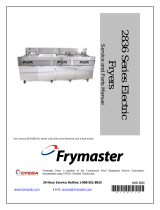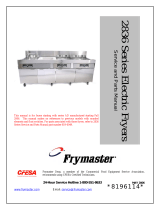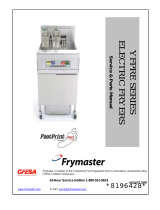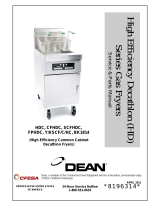
ULTIMATE ELECTRIC SERIES FRYERS
CHAPTER 1: SERVICE PROCEDURES
1-13
1.10 Built-in Filter System Service Procedures (cont.)
3. If the front cover is not accessible, the pump must be removed from the pump motor (remove
input/output plumbing from the pump prior to removing pump). Remove three setscrews from
the pump-shaft housing to disengage the pump from the motor. Remove the gears and
thoroughly clean all internal components. Ensure the inside of the pump housing is free of any
debris or hardened shortening before reassembling. Failure to completely clean the inside
housing and ring gear will cause gear binding after reassembly.
Filter paper/pads that are the wrong size or installed incorrectly will also allow food particles and
sediment to pass through and clog the suction tube in the bottom of the filter pan. Particles large
enough to block the suction tube may indicate that the crumb tray is not being used.
1.11 Basket Lift Service Procedures
Ultimate Electric Series fryers may optionally be equipped with automatic basket lifts to ensure
uniform cooking times. Electric fryers can be equipped with "modular" or "bell-crank" basket lifts.
A modular basket lift (illustrated) consists
of a toothed rod to which the basket lift arm
is attached, a reversible-drive gear motor
and a pair of roller-activated microswitches.
The gear motor engages the teeth in the rod,
moving it up or down, depending upon the
direction of rotation of the motor.
Microswitches at the upper and lower limits
of movement stop the motor when the
basket is in the full up or full down position.
Timing circuitry in the controller initiates
and stops basket lift operation depending
upon the variables programmed by the
operator. When the product button is
pressed, or the manual control is activated,
the timing circuitry activates a coil in the
basket lift relay to supply power to the lower
microswitch. The microswitches stop the
motor at the lift’s upper and lower travel
limits and reverse the direction of current
flow thus reversing the motor direction.
Modular Basket Lift Assembly (Typical).




















